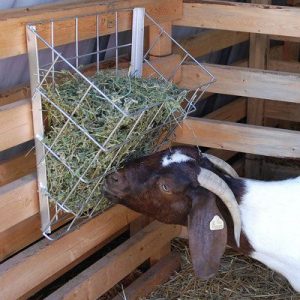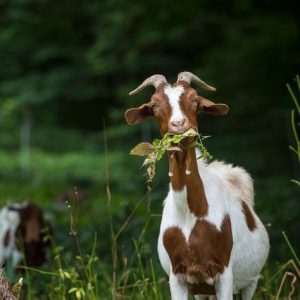Creating an efficient and functional layout for your goat farm is crucial for ensuring the health and productivity of your herd.
1. Site Selection
Choosing the right location is the first step. Consider the following:
- Elevation: Select a site with good drainage to prevent waterlogging and reduce the risk of disease.
- Accessibility: Ensure the farm is easily accessible for transporting feed, supplies, and animals.
- Proximity to Resources: Close access to water sources, veterinary services, and markets is essential.

2. Shelter and Housing
Goats need shelter to protect them from extreme weather conditions and predators.
- Design: Construct well-ventilated and spacious shelters. A common design includes an open-sided shed with a sloped roof.
- Bedding: Use straw or wood shavings for bedding to keep the area dry and comfortable.
- Space: Allocate at least 15-20 square feet per adult goat to allow ample movement and reduce stress.

3. Fencing
Fencing is critical for keeping goats safe and preventing escapes.
- Materials: Use strong, durable materials like woven wire or electric fencing.
- Height: Ensure the fence is at least 4-5 feet high to prevent goats from jumping over.
- Security: Regularly inspect fences for damage and repair promptly to maintain security.

Not to mention, our company can help you to start by giving you all the necessary information you need to get started if not yet in the business. Please check our online shop, we have all the standard business proposals for different capacities at very a cheap price made by the best agricultural specialists as well as Standard design plans that are made by the best agricultural architects around the globe. please visit our online shop now using the links below to witness by yourself
Design plans (FARM HOUSE DESIGNS – Kimd Construction & Farm Consultants)
Business plans (BUSINESS PLANS & PROPOSALS – Kimd Construction & Farm Consultants)
Welcome back from visiting our shop, hope you have placed your order for any of our products or you can place it after navigating more of our informative articles.
So let us continue with the article!
4. Feeding and Watering Stations
Efficient feeding and watering systems save time and reduce waste.
- Placement: Position feeders and water troughs in easily accessible areas to encourage consistent feeding and drinking.
- Design: Use raised feeders to minimize contamination and wastage.
- Water Supply: Ensure a constant supply of clean water. Automatic waterers can be a good investment.

5. Pasture Management
Good pasture management promotes healthy grazing and reduces feed costs.
- Rotation: Implement rotational grazing to allow pastures to recover and reduce parasite loads.
- Forage: Plant a variety of nutritious forages such as clover, alfalfa, and grasses.
- Shelter: Provide shaded areas in the pasture to protect goats from the sun and heat.

6. Health and Biosecurity
Maintaining the health of your herd is paramount.
- Quarantine Area: Designate a separate area for new or sick animals to prevent disease spread.
- Sanitation: Keep living areas clean and dry to minimize disease risk.
- Vaccinations and Deworming: Follow a regular health care schedule for vaccinations and deworming.
7. Handling and Working Facilities
Efficient handling facilities make management tasks easier and safer.
- Chutes and Pens: Install chutes and pens for easy handling during vaccinations, tagging, and hoof trimming.
- Storage: Designate storage areas for feed, tools, and medications close to the working facilities for convenience.
8. Record Keeping
Keeping detailed records helps in making informed management decisions.
- Software: Use farm management software to track animal health, breeding, and production records.
- Physical Records: Maintain physical records as a backup and for easy reference.

9. Sustainability Considerations
Incorporate sustainable practices into your farm layout.
- Renewable Energy: Consider using solar panels for powering electric fences and water pumps.
- Waste Management: Implement composting systems for manure to improve soil fertility and reduce waste.
Conclusion
Planning an efficient goat farm layout involves careful consideration of various factors to ensure the well-being of your herd and the productivity of your farm. By focusing on site selection, shelter, fencing, feeding systems, pasture management, health, handling facilities, record keeping, and sustainability, you can create a functional and profitable goat farming operation. Taking the time to plan thoroughly will pay off in the long run, leading to a thriving and sustainable goat farm.




